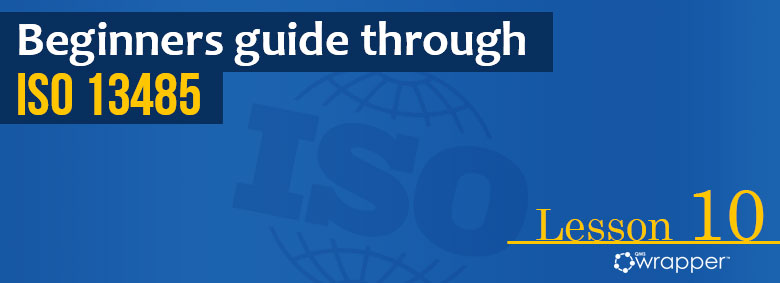
What is considered by the planning of your product realization as per ISO 13485 – Lesson 10
Naturally, planning goes ahead of realization. And this part of the standard explains how important is for you to be consistent in planning throughout all parts of your quality management system. Plus, it refers to all phases of the life-cycle of your medical device.
Quality Plan
This requirement of the ISO 13485 is fulfilled by defining the quality plan. Therefore, first you will make a quality plan that looks like a list of activities that you obliged to follow, according to requirements.
The objective of defining the quality plan is to:
- identify all required processes for product realization.
- define relations between processes.
- define the required resources.
- define acceptance criteria.
- define validation and verification for product and processes, required monitoring and measurement, inspection and testing, handling, storage, distribution, and traceability.
Processes with which the manufacturer realizes the product should be addressed in the quality plan. This includes defining methods, activities, techniques, practices, responsibilities, documentation and specific records that will provide evidence for these processes.
Regulatory Requirements
Regulatory requirements have a crucial role in the designing stage during the planning product realization. You have to review the applicable national, local, and international regulation directives and standards that may apply to your medical device. Besides this, you need to cover all the verification and validation activities, packaging and labeling, clinical evaluation, examinations and quality assurance. These are elements that you need to provide as evidence that requirements are met.
The required resources for production should be defined, and it consists of raw material, required machinery, work instructions, human resources, etc.
Verification and validation of the product
Later on, a medical device must go through the verification process, to see if your product requirement is fulfilled. The verification process can be done through quality tests, calculations, output reviews, etc. The point is that the quality plan defines which verification activities are needed, which parts, components, and activities are to be verified including acceptance criteria as well. After verification, you need to validate it. What does that mean? Validation can be seen as approval of the requirements for a specific intended use or application that has been fulfilled. Each medical device company has to describe the activities that would evaluate the compatibility of the product and what are the acceptance criteria.
The quality plan shall define the labeling and identification requirements for products throughout the realization processes. The content of the labeling will depend on the type of medical device and may include warnings, safety notices, etc.
Traceability is also one of the crucial requirements of ISO 13485:2016. You must define a method for handling traceability. It must include the realization process and documented procedures.
Moreover, customer requirements should be taken into account. All their functional, technical requirements, and performance specifications may influence your planning product realization. Not to forget, even this has to be documented.
In the quality plan, you need to specify or mention the suitable instructions concerning which documents are expected and where the records are stored. For each activity, there must be recorded evidence.
Finally, ISO 13485 requires the planning of the risk management process. Why? Because successful implementation of risk management will obtain the organization a systematic method for identifying risks, evaluating, and controlling them.
The Standard refers us to the ISO 14971 for the guidance of developing, planning, and implementing a risk management system, that suggests an effective way on how to handle risk.
qmsWrapper has an integrated Risk Management Module
that is built according to the ISO 14971 guidance
and it makes it possible for risk managers with little experience
to appropriately perform their risk-related tasks.
It has everything you need to effectively identify, evaluate,
and mitigate risks through the single matrix interface.
PREVIOUS LESSON NEXT LESSON ALL LESSONS
ISO 13485 implementation: Mandatory documents and records
Validation efforts
Gap analysis in QMS